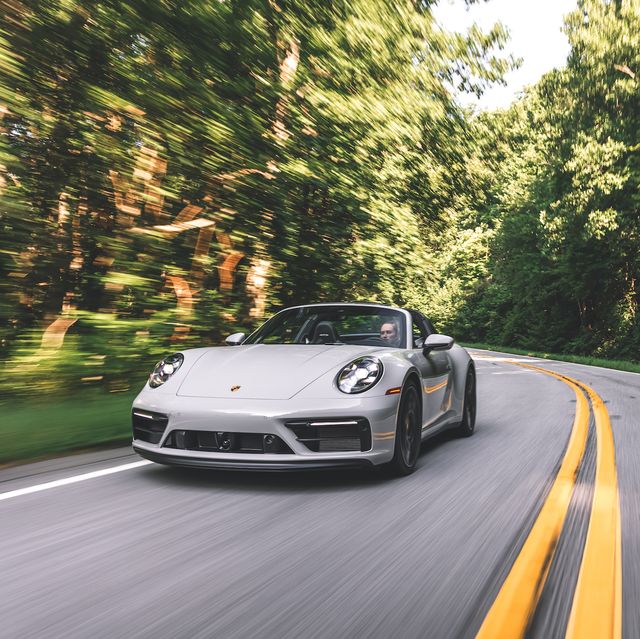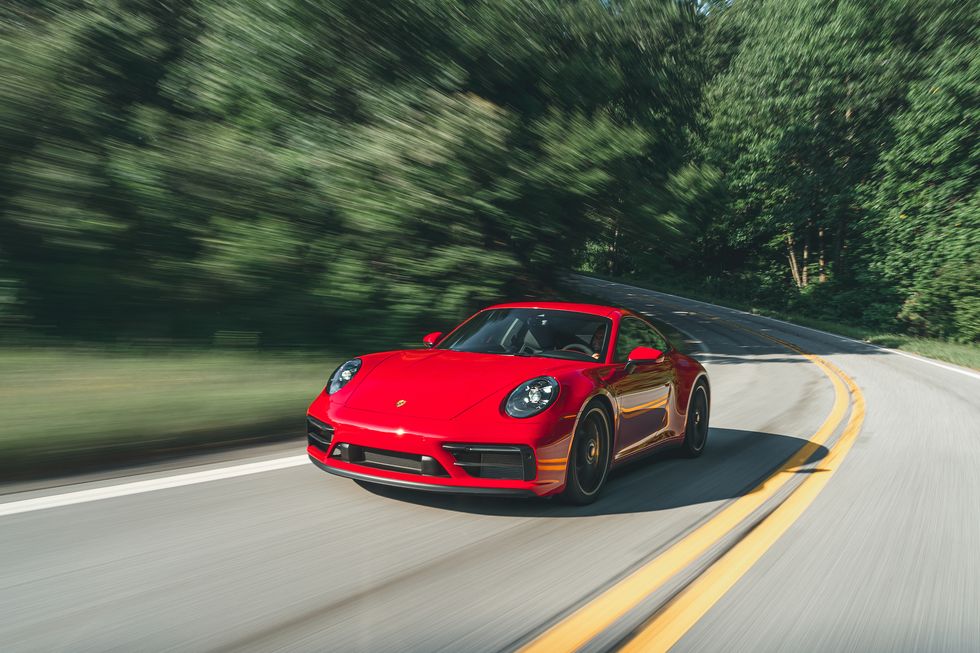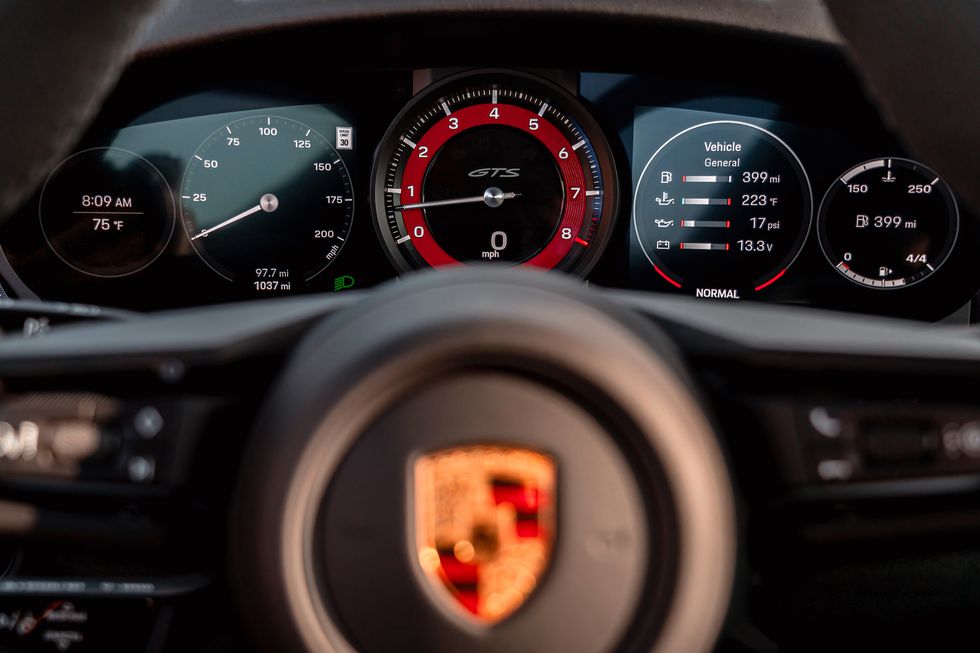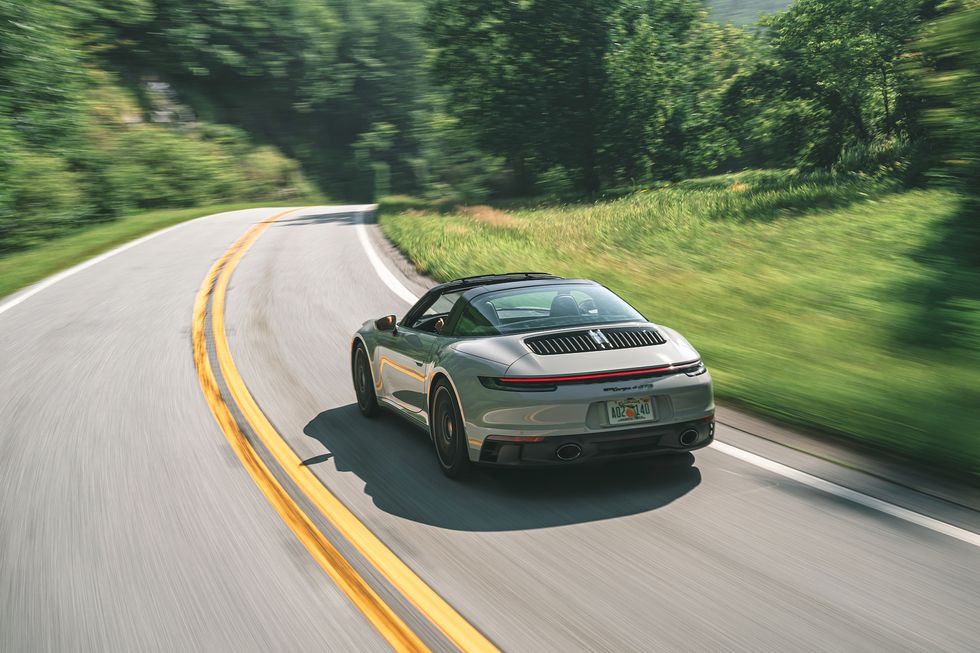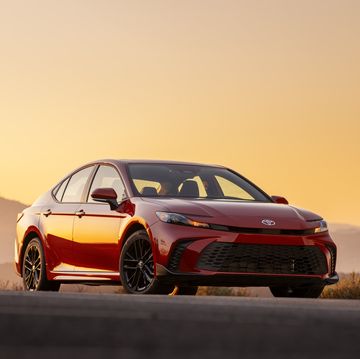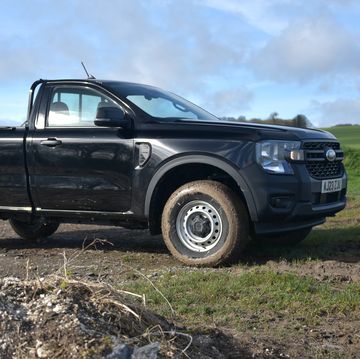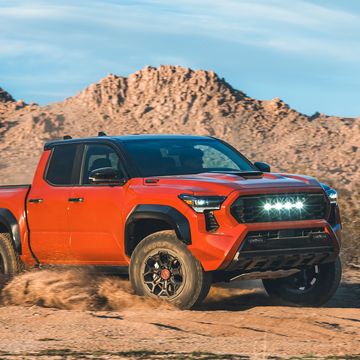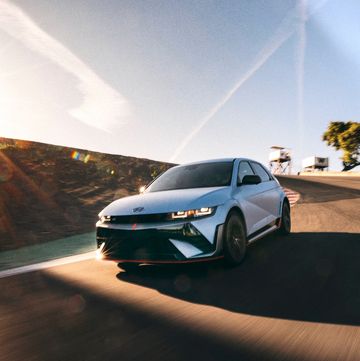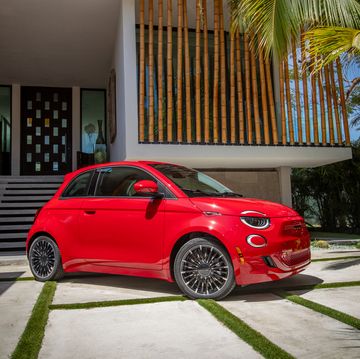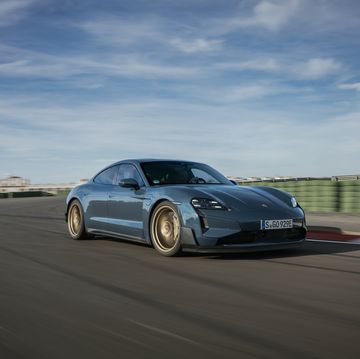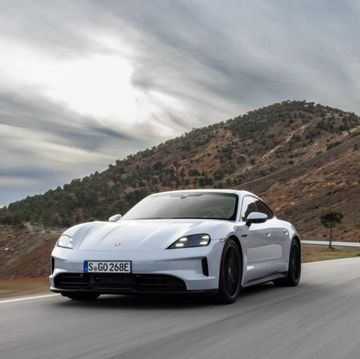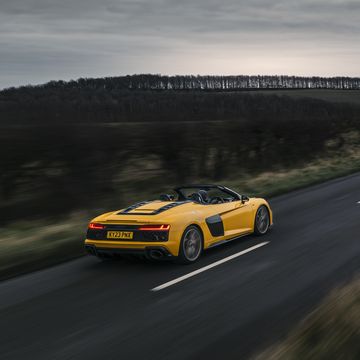The Carrera GTS has occupied a sweet spot in the Porsche 911 range for a while now. The GTS was initially a run-out special for the 997, but it was such a hit that Porsche made it a staple for the following generation. The formula is pretty simple: Take a Carrera S, give it a bit more power, add the performance options enthusiasts want, spec different exterior and interior trim, and sell it for less than the cost of adding all those options to a Carrera S. The appeal is obvious.
This time around Porsche is tweaking the formula ever so slightly. All GTS models now get larger brakes from the 911 Turbo, and all but the Targa get a unique chassis setup with stiffer spring rates, bigger anti-roll bars, and helper springs at the rear. According to Dr. Frank-Steffen Walliser, chief engineer for Porsche sports cars, the company decided to make a bigger step forward in terms of performance with the GTS because the new GT3 did the same, creating space in the process.
Of course the usual GTS accoutrements, visual and mechanical, are present. Most notably, extra boost pressure brings the 3.0-liter flat-six up to 473 horsepower and 420 lb-ft, increases of 30 hp and 30 lb-ft over the Carrera S. As ever, you get your choice of coupe or Cabriolet in either two- or four-wheel drive; the Targa remains four-wheel drive only. Carrera GTS coupes also get an optional lightweight package which reduces weight by 55 pounds via carbon-fiber bucket seats, lighter glass, a lighter lithium-ion battery, and a handful of other detail changes. (Price is yet to be determined for this pack, though note that the bucket seats cost $5900 separately.)
The end result is perhaps the best-looking version of the 992-generation 911 yet and a car that once again appears to sit in a sweet spot. But the reality is a bit more complex.
Porsche invited us to its North American headquarters in Atlanta to sample the first two 992 GTS models in the country, a rear-drive coupe and a Targa 4 GTS. Opposite ends of the GTS spectrum, with a day in the North Georgia mountains to suss them out.
The coupe had arguably the ideal enthusiast spec; manual transmission, lightweight package, carbon-ceramic brakes, forged center-lock wheels, rear-wheel steering, active anti-roll bars, and lots of Alcantara-like Race-Tex trim. It immediately struck me as one of the most 911-y feeling modern 911s I've yet driven.
Take note: Modern 991- and 992-generation 911s feel less rear-engined than all their predecessors thanks to a chassis layout that moves the engine slightly forward. This didn't turn the 911 into a mid-engine car, but the car lost some of its unique feel in the pursuit of better performance and stability.
In this GTS, though, the steering suggests the 911 of old. It's not as totally unfiltered as a manual rack in an air-cooled 911, but it still has a lot to say. This is up there with the best steering feel you can get in any car today, and further proof that electric power assistance doesn't mean the death of good steering. It's a real highlight.
The rest is as good as you'd expect. It's been over a year since I've driven a Carrera S, so I can’t say if the extra power can be perceived without a stopwatch, but the GTS is a seriously quick car. Bear in mind that this car has about the same power as a 997 Turbo and damn near as much as today's GT3. Turbo torque means the GTS has additional flexibility over the GT3; as a result, it feels quicker on the road. Lag is virtually nonexistent despite jumping from 16 to 18.6 psi of boost, and like all iterations of this three-liter, it's rev-happy too. The removal of sound deadening is good as well, as it helps boost intake noise in the cabin to give the GTS a unique sonic character.
Porsche deserves a ton of credit, not only for continuing to offer a manual transmission, but for making such a sweet one. The clutch is quite light, but there's good feel, and in typical Porsche fashion it matches the weighting of the other controls. A slightly shorter shift lever gives the impression of a shorter throw, and the quality of shift is superb. As with all other modern Porsche manuals, there's a crispness here that makes shifting amazingly satisfying. You shift just to shift, as the saying goes, which is good since long gearing and turbo torque mean you don't need to. You could probably drive most of North America’s great roads in third gear alone.
The only other issue with the manual is that it's a seven-speed. You can only get to seventh from fifth or sixth gear, but it's still too easy to grab seventh when you're downshifting from sixth to fifth. With reverse, first, third, fifth, and seventh all forward in the pattern, the gates are also too narrow. That's just the compromise you'll have to put up with for an otherwise excellent transmission.
Though customers couldn’t be blamed for going with the eight-speed PDK. As ever, it’s the smoothest, slickest dual-clutch on the market, and it gives the GTS more speed and daily usability. Ferrari's dual-clutch is quicker on the changes, but while that’s interesting, it’s also pretty much irrelevant.
The Targa 4 GTS we drove was spec’d so differently from the coupe that it was almost its opposite: PDK, adaptive cruise control with active lane-keep assist, and even night vision, which is silly in every car and especially in a 911. Of course, the Targa lacks the purity of the coupe. The extra 275 pounds is quite apparent, and while the steering isn't quite as sweet, it has an appeal all its own.
Targa GTS models do without Sport suspension, so the chassis setup here is closer to that on the standard Targa 4S. Certainly the suspension upgrades are what make other GTS models special, but the bump in ride quality here is appealing. Anyone who lives in a region with beautifully smooth roads should go for the Sport chassis, but those who live in the United States would do well to sacrifice a bit of ultimate performance for ride quality.
(That said, if you want a Porsche that gets the ride/handling balance for American roads even better, go 718. The lighter mid-engine cars, especially the brilliant new 718 Spyder, handle just as well as any Sport-suspension 911 while offering ride quality better than most of today's sport sedans.)
Despite my definite enthusiast preferences, I found the Targa very compelling. It's fabulous to have a beautiful-handling, all-weather, open-top sports/GT car with all the active driver-assist features that make highway slogs so much easier. It's one of the most well-rounded 911s on sale today.
So, as ever with Porsche, the car is really defined by the options you pick. These two cars felt remarkably different considering they both wear the GTS badge.
Porsche rightfully pitches the GTS as a value proposition. However, these cars are still quite pricey; the rear-drive coupe starts at $138,050, with the starting point for the Targa 4 GTS at $158,150. You get all the performance options you want, with the only real notable mechanical extras being the lightweight pack, $3170 active anti-roll bars, $2090 rear-wheel steering, and $8970 carbon-ceramic brakes. And the GTS has two more things working in its favor. Because all Porsche GTS models hold their value quite well, you can likely get your additional upfront cost back on the other end. And unlike the supply-limited GT3, you can actually go to a Porsche dealer and buy a GTS, starting early next year.
While its stiff Sport suspension might not be for everyone, the Carrera GTS remains a particularly great 911. It sits right in the middle of the 911 range, and that's a fine place to be.
A car enthusiast since childhood, Chris Perkins served as Road & Track's engineering nerd and Porsche apologist.
